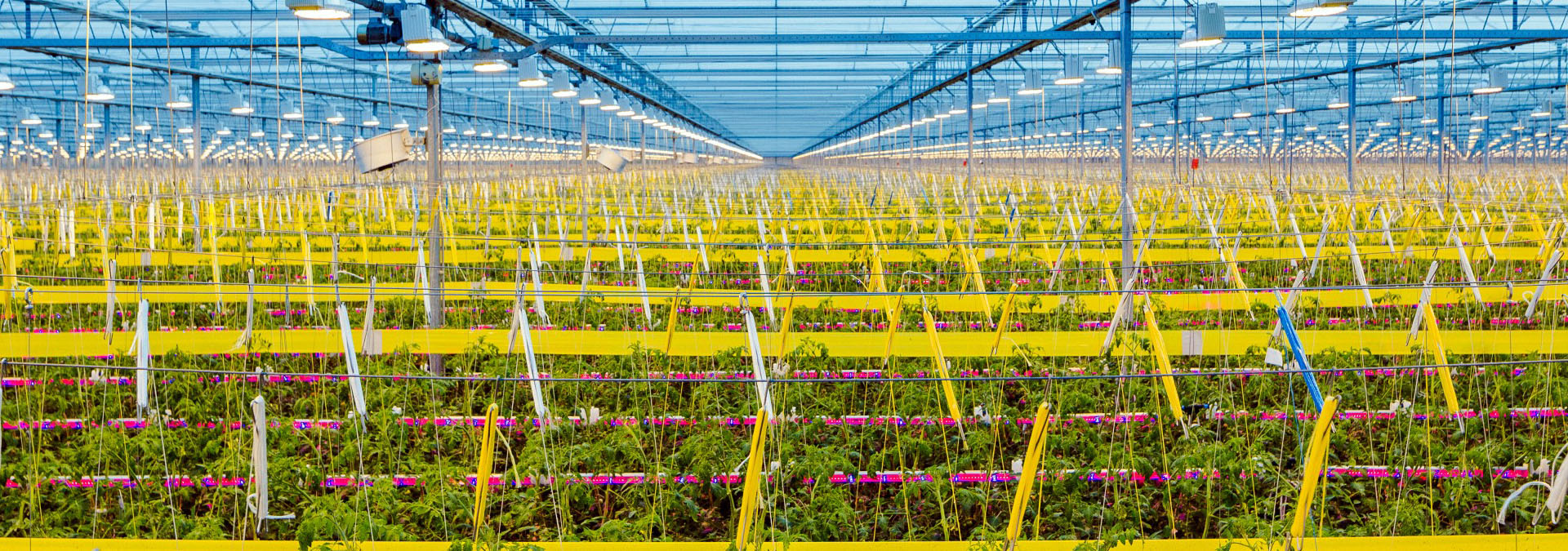




For Hortilux, we developed innovative LED grow light fixtures with unique USPs and a distinctive Hortilux design.
Feeding today’s world population is impossible without the use of greenhouse horticulture. Next to that, people all over the developed world are increasingly demanding seasonal vegetables all year round, even when the local climate doesn’t allow that kind of growth. Which is why greenhouse farming has become a significant factor in the food supply.
This kind of farming has a significant impact on the environment. Commercial greenhouses have to be lit in a way that optimizes growth. So an important question is how to minimize the energy it takes to grow these crops. One obvious answer is to convert greenhouses from the traditional incandescent lighting, usually high-pressure sodium lamps, to more energy-efficient LEDs.
If we learned one thing in our 20-year collaboration with Hortilux, it’s that designing fixtures for greenhouses is all about efficiency. Using LEDs seems, therefore, a no-brainer. Farmers can enjoy a high light output without heat damage to their plants, which simply means optimal plant growth and consequently an increasing yield per square meter and thus a lower environmental impact.
However, as farmers need to invest heavily when switching to a new system, building a solid business case is not that easy. When Hortilux asked us to develop LED fixtures we knew we had to stretch the capabilities of LED technology and – at the same time – keep the cost price low to improve the business case and outperform competing manufacturers.
Feeding today’s world population is impossible without the use of greenhouse horticulture. Next to that, people all over the developed world are increasingly demanding seasonal vegetables all year round, even when the local climate doesn’t allow that kind of growth. Which is why greenhouse farming has become a significant factor in the food supply.
This kind of farming has a significant impact on the environment. Commercial greenhouses have to be lit in a way that optimizes growth. So an important question is how to minimize the energy it takes to grow these crops. One obvious answer is to convert greenhouses from the traditional incandescent lighting, usually high-pressure sodium lamps, to more energy-efficient LEDs.
If we learned one thing in our 20-year collaboration with Hortilux, it’s that designing fixtures for greenhouses is all about efficiency. Using LEDs seems, therefore, a no-brainer. Farmers can enjoy a high light output without heat damage to their plants, which simply means optimal plant growth and consequently an increasing yield per square meter and thus a lower environmental impact.
However, as farmers need to invest heavily when switching to a new system, building a solid business case is not that easy. When Hortilux asked us to develop LED fixtures we knew we had to stretch the capabilities of LED technology and – at the same time – keep the cost price low to improve the business case and outperform competing manufacturers.
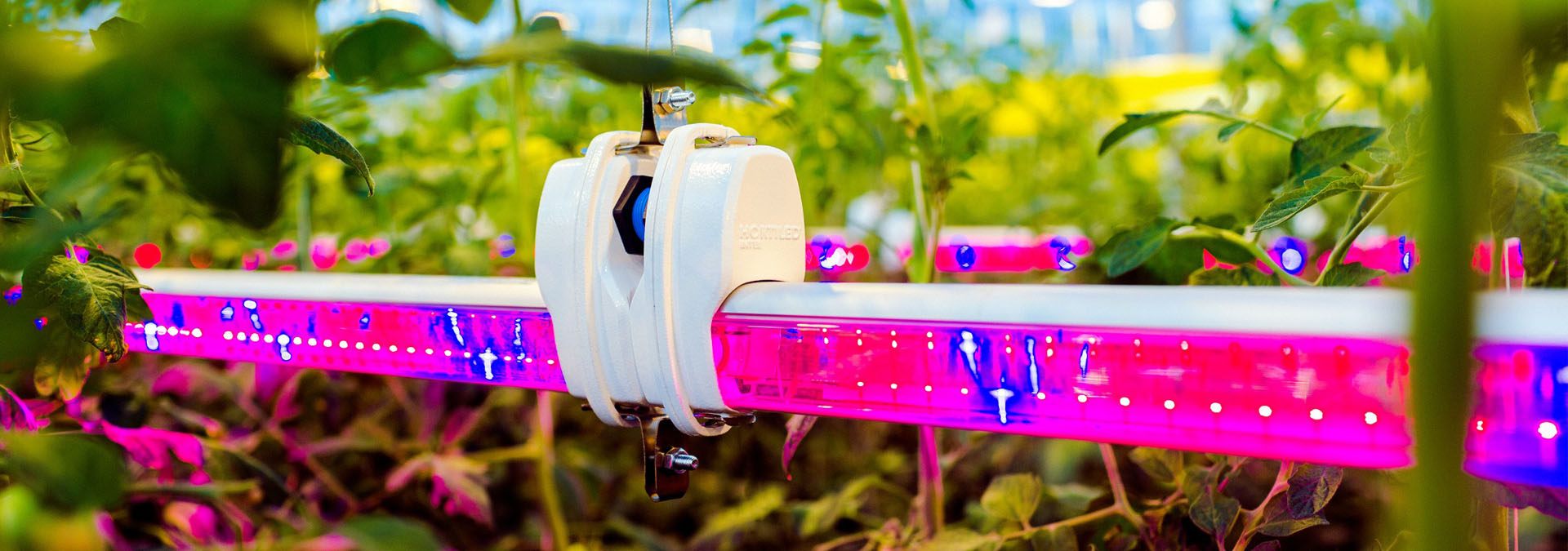
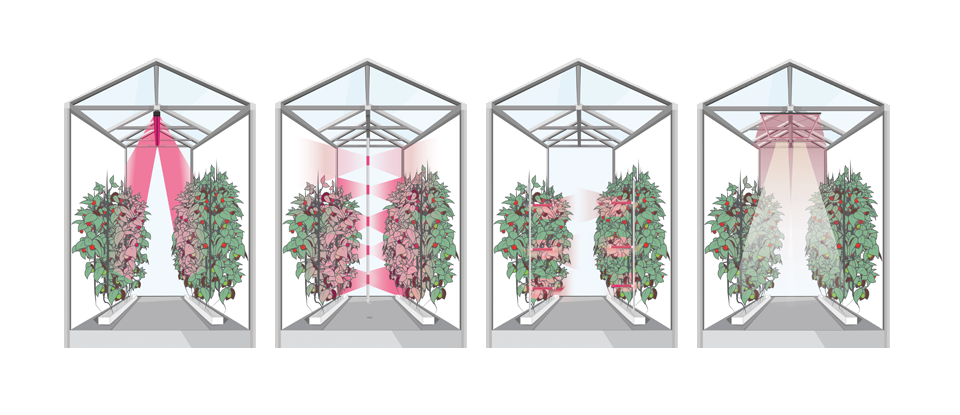
We have explored many different concepts for lighting crops. This exploration resulted in two unique fixtures: the Hortiled Top and the Hortiled Inter. The names may already give away the lamps’ specific application; the Hortiled Top is the most versatile fixture and suitable for top lighting of all types of crop. We designed the Hortiled Inter, especially for high-wire cultivation. This fixture hangs in between the plants to supplement the top lighting.
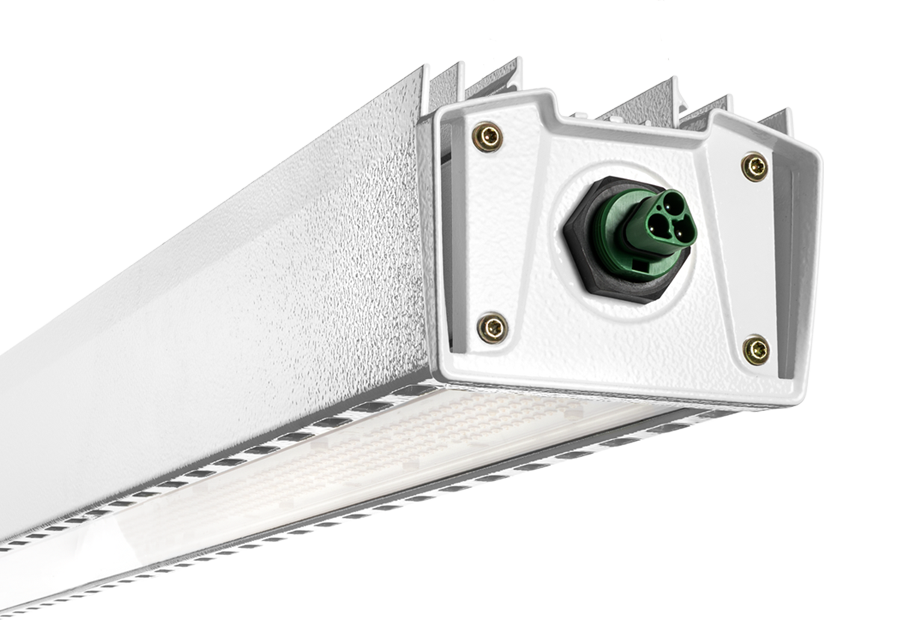
For the highest light intensity, the LEDs need to be pushed to their max. But when the LEDs become too hot, the efficiency drops. Competing products use active cooling but because this solution is noisy, expensive and consumes energy, it’s not preferred. We made notches in the compact aluminum housing that allow the hot air produced by the lights to flow away. This chimney effect provides cooling of the fixture without the need for noisy, expensive and energy absorbing active cooling.
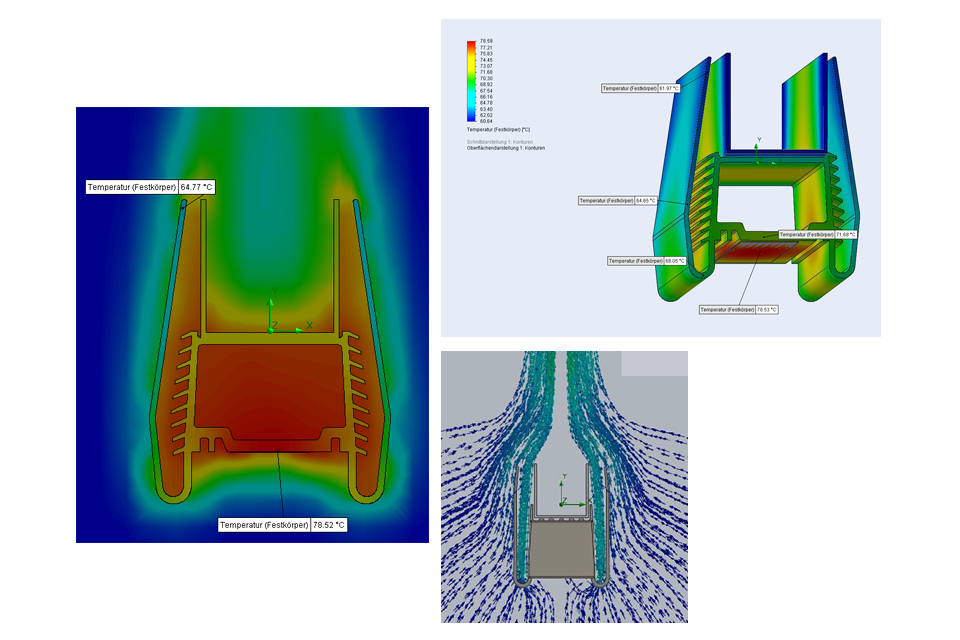
We made thermal simulations, working towards the most efficient and cost effective design for aluminum extrusion housing parts. The innovative design of the housing makes Hortiled Top the most efficient LED fixture on the market today; it performs 30% better than conventional passive cooled fixtures. The absence of an active cooling system saves on installation costs and takes away less natural daylight in greenhouses during daytime. Optimum cooling also minimizes the risk of fixture failure, thus increasing reliability.
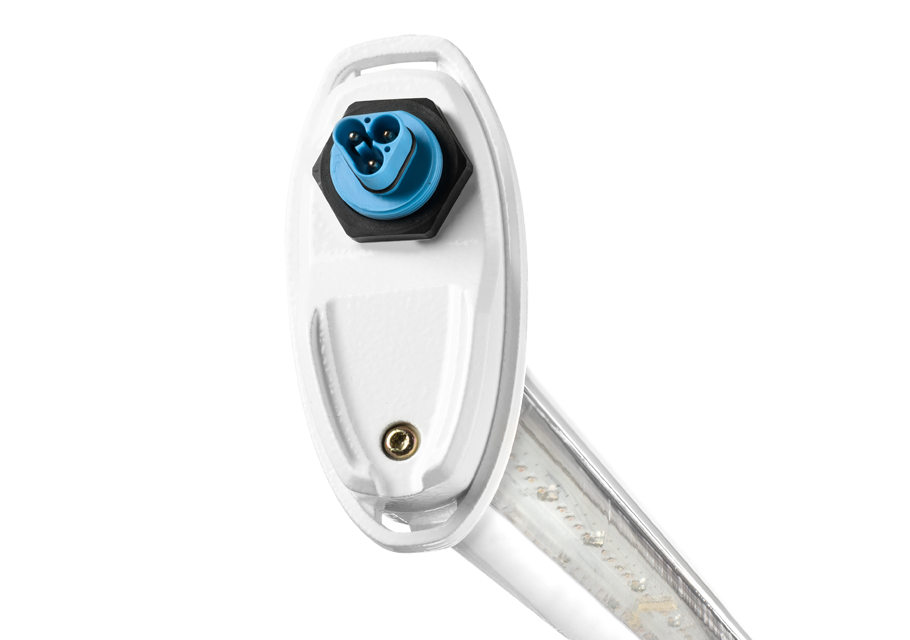
High wire cultivation, like tomatoes and cucumbers, is often dense. The top lights cannot reach all the leaves and incandescent lighting cannot be used close the plants as it burns them. LED technology offers the possibility to reach the leaves from new angles. In an innovation workshop, we explored different options for interleaf lighting. We came up with a patentable solution that ensures optimal light distribution against minimal costs.
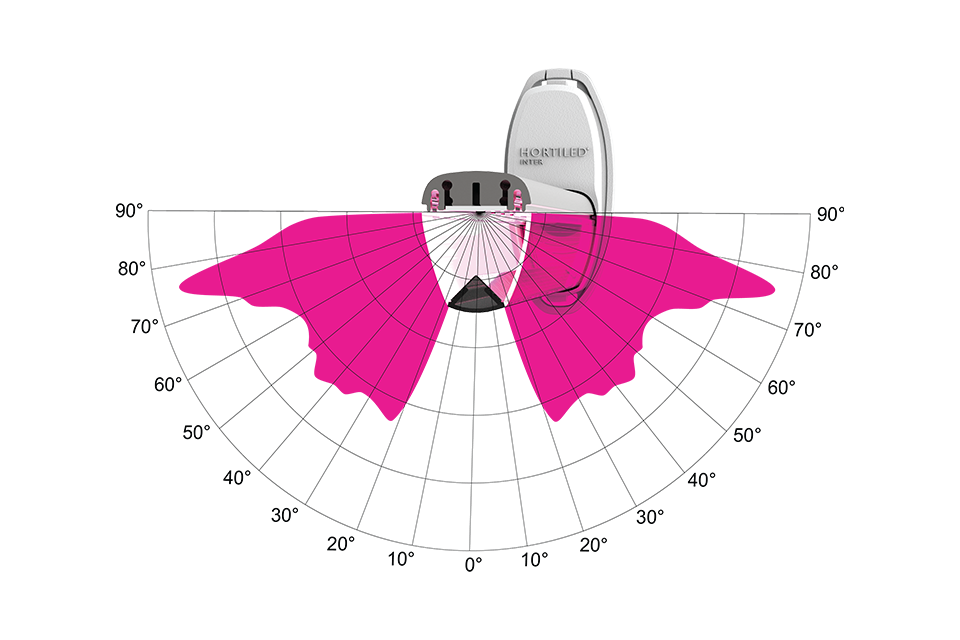
We used a single row of LEDs, directed downwards, in combination with a mirror and lens. From independent research, we learned that the top of the leaf in green plants uses light up to 20% more efficiently than the underside of the leaf. We designed the small lightweight fixtures in such a way that they can hang in between the plants and make the LED light reflect exactly on top of the plant’s leaves without burning them: a unique benefit for the growers, looking at a higher yield per plant.
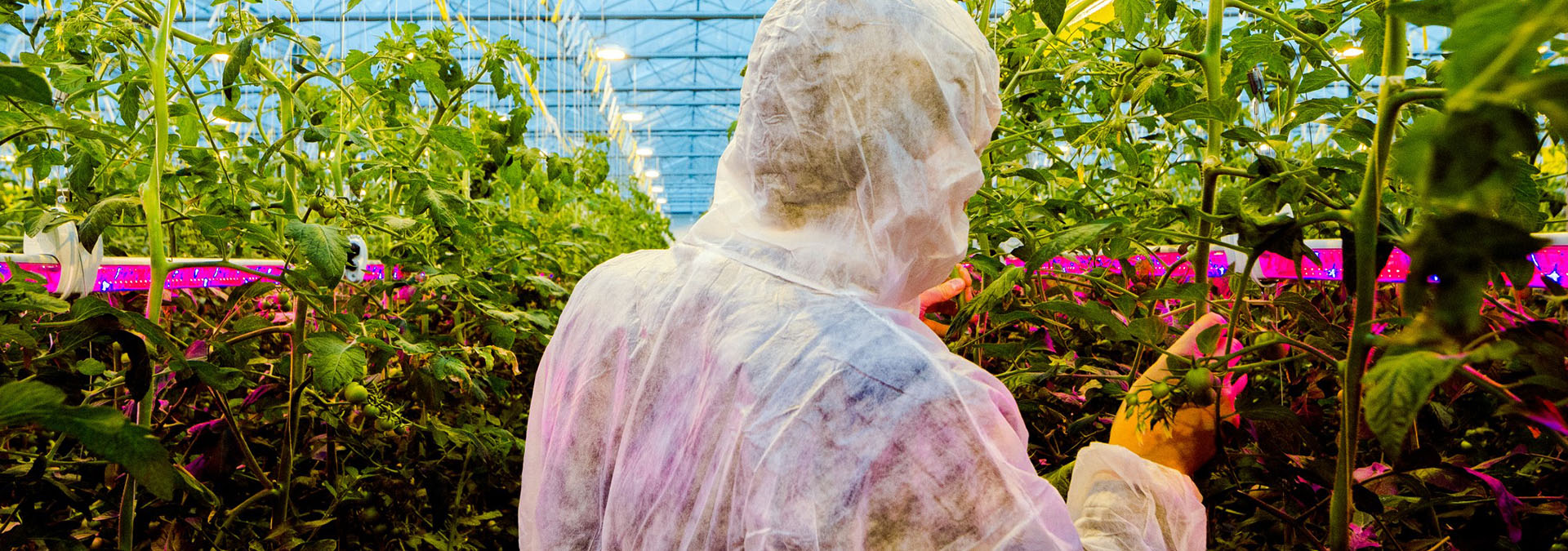
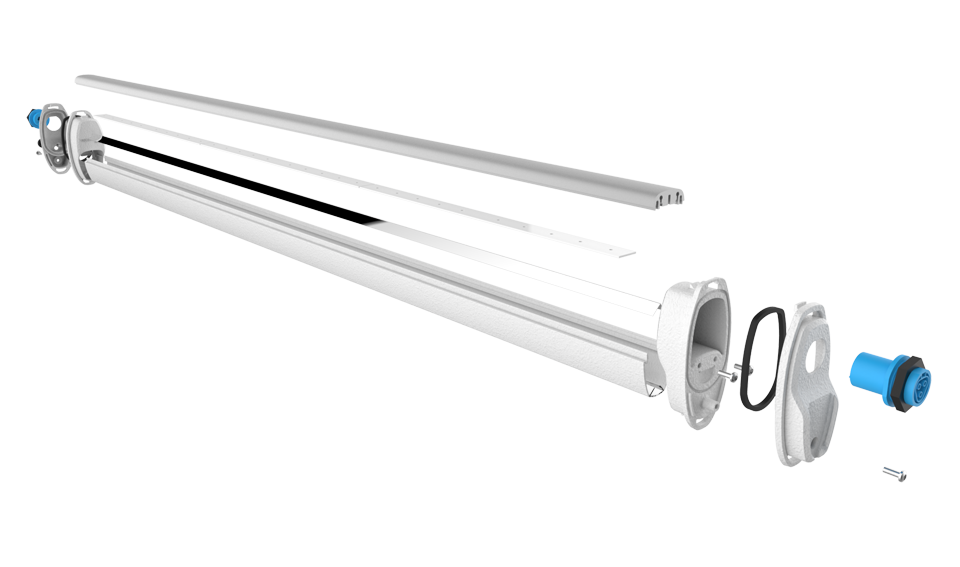
We developed both solutions in just one and a half year. For both fixtures, we covered the full innovation and engineering process and also took care of patent enquiries. Both products had their own technical challenges. It was our job to solve a wickedly complex combination of problems that dealt with a variety of scientific disciplines.
During this process, we chose a multidisciplinary approach. We worked alongside our client and connected with growers, biologists, the prototyping team, producers, suppliers and patent office. We listened closely to all these experts, processed the information and kept developing in every step.
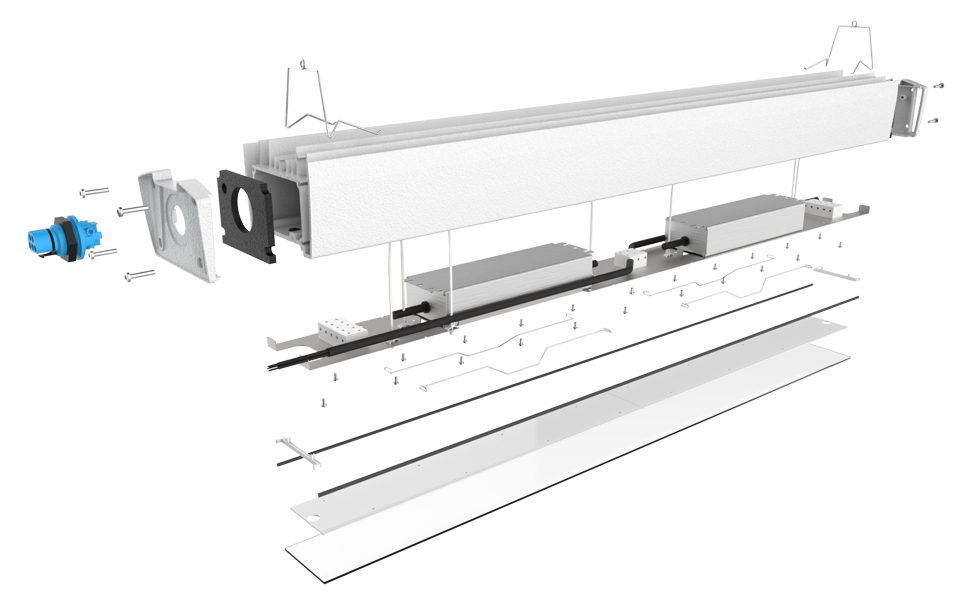
We created smart products that ensure the strategic position of our client Hortilux Schréder in this field. The Hortiled Top and the Hortiled Inter give growers the opportunity to boost their yield per square meter.
As best in class, the Hortiled products have a 30% higher energy efficiency, which is a key factor in a profitable business case. Both products contribute significantly to a sustainable supply chain for fresh produce and let consumers enjoy tasty products all year round.
